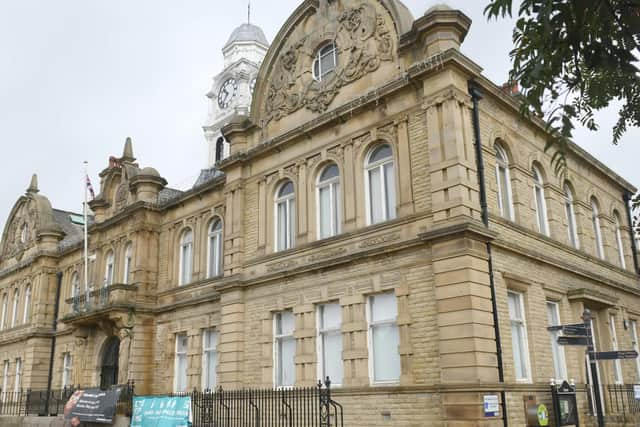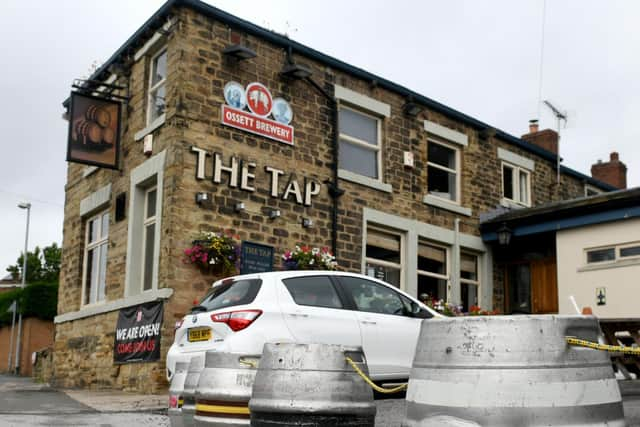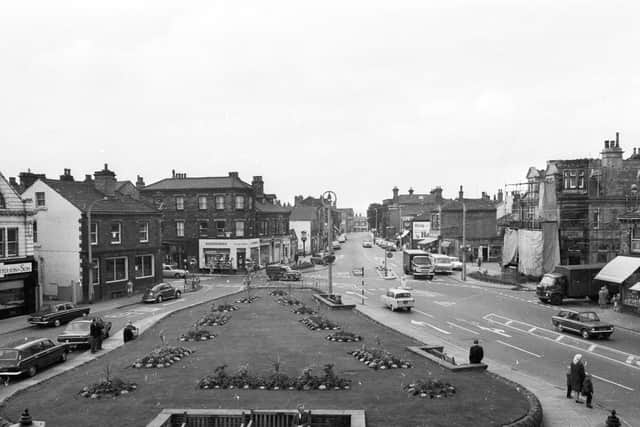Ossett's rich history: Beer, soap, mills and a brief spell as a spa town


The Victorians were obsessed by medicinal advances. Not just the genuine ones that began to eliminate, or at least alleviate, some health conditions, but also with the less likely products that claimed they could “cure” everything from gout to gallstones.
Thomas Tomlinson Cussons managed, very adroitly, to combine both markets. He qualified as a member of the Pharmaceutical Society of Great Britain in 1869, and set up shop as a chemist in the Holbeck area of Leeds. He sold that a decade later, and took over another shop in Louth. He wanted to further expand his business and saw an opportunity beckoning in Ossett. It wasn’t just a chemist’s, however, for he also operated as a wine merchant.
Advertisement
Hide AdAdvertisement
Hide AdThe independent Cussons range had a firm root in offering the public of the day all manner of remedies. There was Cussons “Excelsior” Tic Mixture, Cussons Compound Rhubarb Pills, Cussons Antibilious Pills and Cussons Blackcurrant Cough Elixir. And this very savvy Ossett-based entrepreneur went one better than his rivals, for in 1897 he even bought up a nearby glass factory so that all his potions and pills could be sold in his own containers.


Just as his father before him, Alexander Tom Cussons was a pioneering businessman, and he went to Ossett Grammar School. And, like his dad, he never failed to seize an opportunity when he saw one. The firm started to sell its Cussons products through the expanding Marks & Spencer chain at the end of the First World War, then it bought up a pair of Bond Street perfumiers – Piesse & Lubin and Bayley’s. Tom’s daughter, Marjorie, examined the potential of scented products, which led to the product with which the firm would always be associated – Cussons Imperial Leather Soap.
Stan Barstow, the novelist and playwright, would no doubt have known about the Cussons family, for Stan also went to the local Grammar. The son of a coal miner, many of his novels and plays are firmly rooted in the town. Perhaps the best-known is A Kind of Loving, the first of a trilogy that followed its main character, Vic Brown, through a doomed marriage, to divorce, and finally a move away from his home town Cressley (a disguised Ossett) to London. Barstow’s work has been made into a film (starring Alan Bates and Thora Hird), and both TV and radio series. Published in 1960, it has never been out of print.
He once wrote that Ossett and Horbury were the “border country” where the north-west of the coalfields collided with the south-east of the wool communities, and others have observed that the area was a mix of the smaller mines and mills. Those mills may have been smaller in size, but they had an enviable reputation in the trade for their high-quality production, and what they made was exported all over the world. The specialty in Ossett was shoddy – essentially the recycling of woolen garments. There are still a small number of textile mills in the town, and today they are part of specialty markets, such as making carpet tiles.
Advertisement
Hide AdAdvertisement
Hide AdThere was, however, one short period in its history when Ossett promoted itself as a spa town. A local stonemason believed that if he built it, people would come.


A few did turn up to take the waters in an attempt to cure their ailments, but not in any great numbers, and in the late 19th century, the idea was quietly shelved, But the failed enterprise does live on, for one corner of the town is still referred to as “Ossett spa”.
There are conflicting theories about the origin of the town’s name. Some claim that it derives from Norse roots, being the territory or farm of a man called Osla. More plausible, perhaps, is that there was a great battle at York in AD 867, when the Anglo-Saxons, under King Osberht, met the Great Heathen Army of the Vikings. In the churchyard at Thornhill, across the valley, is a compact set of graves, indicating the high status of the men that they commemorate. One has the symbol of the royal dragon carved on it, and also the name of Osberht. Many historians now believe that Ossett’s name is a homage to that fallen warrior.
In the late Victorian era, many new boroughs were established all over the UK, and Ossett was given that distinction in 1890. The town council held a competition to determine the design of its new premises, which were to be on a site in the Market Place. The winner was Walter Hanstock & Son, which came up with a magnificent building that looks as if it would be far more at home in the French countryside, in the grounds of a great park.
Advertisement
Hide AdAdvertisement
Hide AdIt is in the renaissance style, with cupolas, pillars, domes, circular windows and ornate Greek-style supports. The main block has 12 bays, and then there are another three on either side. And then there’s also the clock tower. When the final bills came in, the council paid £22,000 to the architects and construction team – which would be many millions today.


For some reason, the council decided that (many years later) what was missing was an organ. So, shopping around, it discovered that a Merseyside cinema was closing down, and dismantling its Compton instrument. It was shipped over to Ossett and installed in 1970. But the original was also improved with parts and spares from defunct cinemas from all over the country.
While the structure is still called the Town Hall by everyone, it ceased to function as the local seat of government nearly 50 years ago, when Ossett was absorbed into Wakefield District Council. It is Grade II-listed, as is another landmark, the Gawthorpe water tower, which was built in 1928 to store drinking water for the area.
It is 55 metres high, built of concrete, and a striking homage to the Art Deco movement. That local water, of course, plays a vital role at the acclaimed Ossett Brewery on Low Mill Road. Not only does it brew some excellent ales and lagers, but it is also a weekend social centre.
Advertisement
Hide AdAdvertisement
Hide AdThe brewery has a property portfolio of its own, too, with a small (and expanding) chain of pubs. It is one of the main employers in the town, and has a fine community ethos since it also supports local charities and causes.
It is one reason, among several, why this is a town not only worth visiting, but worth raising a glass to.
Support The Yorkshire Post and become a subscriber today. Your subscription will help us to continue to bring quality news to the people of Yorkshire. In return, you'll see fewer ads on site, get free access to our app and receive exclusive members-only offers. Click here to subscribe.